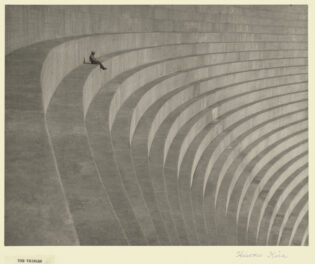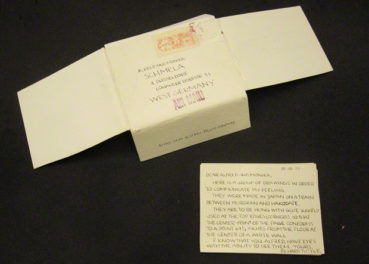
Poster for Jean Renoir’s The Grand Illusion, 1938
The great American filmmaker and decorated World War II veteran Samuel Fuller once claimed that the very idea of an antiwar film was ridiculous. War on screen, he said, was inherently exciting and attractive. The only way to replicate the experience of war in the cinema would be to have marksmen under the screen firing live rounds at the audience.
Honestly depicting the brutality of war was a key problem for filmmakers who attempted to capture World War I on screen. The first mechanized war and the first to be captured by the technology of celluloid, the bloody conflict led different filmmakers to take very different approaches to its aesthetic, dramatic, and moral issues. Two such experiments screen November 8 and 9 at the American Cinematheque’s Aero Theater to complement the Getty Research Institute exhibition World War I: War of Images, Images of War, which opens November 18.
J’Accuse, The War Film to End All War Films

Harrowing sequence from Abel Gance’s J’Accuse in which slain soldiers rise from the dead
One of the greatest of all war films was made by one of the silent era’s boldest innovators, French master Abel Gance. J’Accuse (1919) begins as a melodramatic love triangle set against the backdrop of the First World War, but over the course of the film’s nearly three-hour running time the war comes to the forefront—and it becomes clear that Gance has only been using melodrama as a pretext. He draws us in with the comforts of a familiar genre, only to rip that comfort away with brutal immediacy.
Gance had already served in World War I when he returned to the front lines with his camera to record actual battles for J’Accuse. He had the full cooperation of French government officials, who mistakenly thought Gance was assembling a patriotic call to arms.
The truth couldn’t have been more different. Seeking to expose what he referred to as “the war and its stupidity,” Gance shot positively chilling battle footage. Years ahead of most of his contemporaries in his use of expressionistic visual metaphors and rapid-fire editing—the perfect visual corollary to the advanced rat-a-tat weaponry being employed in the war—Gance came the closest of any filmmaker in history to proving that, in fact, movies can capture the experience of war. Particularly unforgettable is a hallucinatory sequence in which soldiers rise from the dead to question the validity of their sacrifice. Gance used real soldiers, many of whom would die in battle soon afterward; the chilling result is a scene in which men are playing their own ghosts.
J’Accuse screens Saturday, November 8, at 7:30 p.m. at the American Cinematheque’s Aero Theater in Santa Monica. Tickets »
Grand Illusion, Portrait of a Vanished World

Pierre Fresnay and Erich von Stroheim as uneasy enemies in Jean Renoir’s The Grand Illusion.
Twenty years after the heat of the war, Jean Renoir brought us La Grande Illusion (Grand Illusion, 1938), a cinematic treasure that is more contemplative and reflective than Gance’s work.
Jean Renoir served in World War I, but his film has no scenes of battle. Instead the action takes place in German prison camps, where captured French soldiers and officers plot escapes, tell stories of home, and try to remember what they’re fighting for. Renoir’s film is distinguished by its emphasis on class, as he presents German and French officers—who are officially enemies—as having more in common with one another than with enlisted men on their same side. Renoir goes deeper, however, to find the common humanity among all of the characters. His long takes and deep-focus compositions underscore this theme by uniting the figures in the frame.
Renoir’s movie is about both 1938 and 1918. Its scenes of book burning and anti-Semitism clearly allude to the Nazis, and Renoir ultimately uses the connections between the two world wars to create a sophisticated inquiry into the tension between progress and human nature. La Grande Illusion is simultaneously a portrait of a changing world, one that had already vanished by the time the movie was made, and proof that some of man’s darkest tendencies are unchanging.
In our own violent age, the moral questions posed by Renoir’s and Gance’s films remain as relevant as they were 100 years ago.
Grand Illusion screens Sunday, November 9, at 7:30 p.m. at the American Cinematheque’s Aero Theater in Santa Monica. Tickets »




A terrific series…Thank You GETTY! & American Cinematheque! for putting together such a terrific program! I look forward to more cinema collaborations with both great institutions!